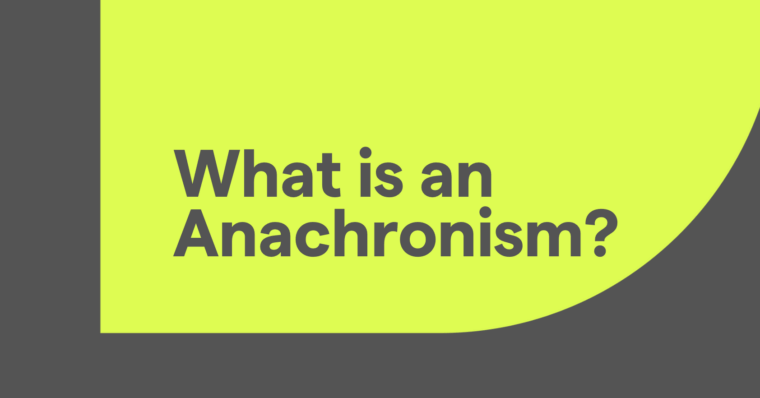
Whether you’re a single individual or a large organization, the work you’ve chosen to pursue matters, but how you pay for it matters, too. Doing the work is up to you; financing it often involves grant-giving organizations.
This is where grant proposals come in. When written well, a grant proposal can convince a reader that your proposed project or research is important, necessary, and worthy of funding. Here is how to write a winning grant proposal, with a step-by-step guide.
What is a grant proposal?
A grant proposal is a detailed and comprehensive document asking for funding from an organization that offers financial assistance, usually a government or philanthropic agency. These funds usually go toward developing a researcher or an organization’s area of study, goods, or services. Grant proposals are routinely submitted by students conducting research, academics, scientific institutions, nonprofit organizations, and for-profit businesses.
Grant proposals are highly structured pieces of writing that follow specific guidelines set out by the grant-giving body. At its core, a grant proposal is a piece of writing that tells a grant evaluator about a project you want to undertake, persuades them of the project’s importance, and convinces them to allocate you the funds necessary to complete the project.
Types of grants
There are many different kinds of grants. It’s important to choose the right grant type for your research or project objective because each grant has its own rules and structure. If you don’t qualify for the grant you or your organization apply for, you could fail to receive any financial assistance.
The most popular grants include:
1 Research grants
Research grants support advanced scientific studies, often involving cutting-edge technology. Academic, pharmaceutical, and technology institutions generally apply for these grants to conduct innovative research. Researchers typically submit proposals to secure funding.
2 Educational grants
Educational grants fund schools, educational organizations, or research efforts in the field of education. This can include funding for after-school activities in public schools, school-wide tutoring efforts, or hiring more teachers and paraprofessionals. Educational grants aim to equip students with the necessary tools and resources for life beyond school.
3 Project-based grants
Project-based grants fund a specific project, question, or experiment that usually has set time parameters. They are often awarded to individuals or organizations specializing in a particular field. Agencies that give out project-based grants generally award many different grants, funding several different projects all at once. The funding can cover all aspects needed to complete the project, and it’s up to the grant recipient to allocate the funds to a budget.
4 Fellowship grants
Fellowship grants are usually provided to individuals to fund their advancement in an academic field, including the sciences and humanities. They are generally offered to those who have just graduated college, finished a doctorate, or are starting out in their careers. Fellowship grants can cover various aspects necessary to support the individual, including travel and living expenses.
How to write a grant proposal
Grants often call for a very specific structure, which is delineated in the instructions for the grant. While the naming of each section is different by grant, the overall structure usually stays the same. The key components of a grant proposal include:
Needs statement
The first section of your grant proposal qualifies as the abstract and should explain why your project is needed. Make sure it includes previous studies, data, or news articles to give context to your project.
Think about what problem your proposed endeavor researches or seeks to alleviate in the world. You also want to include data to validate that problem—how many people in the world does it impact, and what are some details about those people? This is also the place to write an overview of what the current literature or research says about this specific area of research. If your proposed project fills a gap in current understanding, clarify that here.
A strong needs statement is concise, supported by evidence, and clearly demonstrates why your proposed project is important.
Project description
This section describes your proposed project. This section should include the project’s:
- Objectives
- Methodology
- Team members
- Project timeline
- Hypotheses
- Outcome evaluation criteria
Additionally, it should highlight how your project differs from and contributes to prior research. For example, tell the reader if you will be using a new research method or sample set or if you will build upon a previously conducted experiment.
This section should resolve any questions a reader might have about your proposed project. It will likely compose the majority of the entire grant proposal. Consider using subsections to divide this part, keeping the document organized and easy for the reader to navigate.
Budget justification
In this section, you will explain how the requested funds will be utilized to complete your project. The budget justification is crucial as it clearly informs the grant evaluator why this funding is necessary, and it demonstrates that you or your organization is capable of efficiently allocating the funds to finish the project successfully.
Common components of a budget include:
- Personnel
- Materials
- Any overhead costs of the project
This is where you would outline, for example, the costs of flights to the research location, how much you would pay assistants and any taxes you may be responsible for.
You could format this section as a table or spreadsheet. If you do, make sure you include descriptions of each line item and explain why it’s necessary for the project.
Evaluation plan
The purpose of an evaluation plan is to describe how you or your organization plans to measure the findings, results, or effects of the proposed project—it shows that you know how to judge success. In this section, you should expand upon the tools and metrics that you will use to gather and analyze the results from your project. Clearly state what success might look like.
This section should also include a sustainability plan that describes the future of the project after the funds run out or after the time period covered by the funds. It’s important to do this to demonstrate that you are committed to the project even after it has funding.
Common mistakes in grant proposals and how to avoid them
Grant writing is difficult at first, and there are many common pitfalls when it comes to writing grant proposals. Here are some of them, as well as how to avoid them:
Lack of clarity
A grant proposal that isn’t clear is a surefire way to lose the reader’s attention. If you cannot communicate concisely why your proposed project is important and impactful, then you can be sure that you won’t convince the grant evaluator. A grant proposal that lacks clarity can also make the writer appear sloppy and illogical.
One solution to this problem is to simplify the language you use. Try using shorter words and a more direct tone of voice. Clearly state the problem your research addresses and how your project aims to solve it. Alternatively, have peers review your entire grant proposal for an additional perspective.
Ignoring grant guidelines
Grant issuers often dictate the exact format for the grant proposal—down to the wording of the different sections. Ignoring these guidelines is potential grounds for rejection.
To avoid this mistake, carefully read through the guidelines several times and pay extra attention to the directions. Make sure to verify the deadline for the proposal and file yours before that date.
Inadequate needs assessment
If you don’t adequately describe why your project is needed, there’s a high chance you’ll fail to convince the grant evaluator to fund your proposal. This can happen if your needs assessment doesn’t include enough background, data, or a sufficient literature review.
To avoid making this mistake, do a thorough search of the industry before writing your needs assessment. Take notes on what others have done in the space, and talk about it with your colleagues. A better understanding of your project’s context allows you to conduct a stronger needs assessment.
Overcomplicating the budget
Your grant proposal will likely be the first time a reader learns about your project. They want a general sense of why your project is important and how you’ll fulfill it successfully. They don’t want to get bogged down in details. This is especially true in the budget section.
Don’t overcomplicate the budget. The reader doesn’t need to know how you’ll spend every single cent you’re requesting.
The way to avoid this mistake is to only submit a budget with broad categories. Use categories like “administrative” or “overhead.”
Lack of focus on sustainability
Ideally your project will have an impact that will live beyond the time bounds of the specific funding you’re requesting. If you don’t show that you’re focused on how to sustain your project after the grant, it could suggest that you haven’t thought deeply enough about it.
Be clear about the future of your project after this specific grant. Ensure you’re convincing the reader that you and your team are committed to the long-term success of the project and your contribution to the community.
Tips for a successful grant proposal
With some practice, you can write winning grant proposals. Here are some tips to accomplish that.
Write to persuade
Remember that grant proposals are intended to convince grant evaluators that your project is important enough to fund. After all, grant evaluators are just people who can be persuaded by a good piece of writing.
Think about the emotional aspects of your project and be clear about them. Try using the three rhetorical appeals in your persuasive writing. Use pathos to appeal to your reader’s emotions, such as outrage, sympathy, or urgency; ethos to appeal to the audience’s sense of ethics and character; and logos to appeal to their sense of logic.
Review and revise
As with all professional writing, you must edit and proofread your draft. Ask other teams within your organization for help compiling all the materials you need when you revise your proposal. You may also want to ask another colleague to proofread it to give it a fresh set of eyes.
Submission best practices
Grant proposals usually have strict formatting rules. Make sure to follow them. They may tell you exactly what the section headers should be called, how many words should appear on each page, and how to submit it. Make sure you double-check these guidelines after you’re done with your proposal draft.
Don’t leave submission down to the last minute. This could leave you open to mistakes if you’re rushing to send off a grant proposal. If you can, submit the proposal before the deadline.
Stay positive
Grant writing can be hard and takes some practice to perfect. Many writers make an entire career out of it. Even experienced writers get rejected—so don’t feel too dejected if your first or first few grant proposals are not successful. Take each grant proposal submission as a learning process, and remember to stay positive.
Grant proposal FAQs
How long should a grant proposal be?
Some proposals can be as short as 2-5 pages, while others may extend to 25 pages or more. Always follow the specific requirements provided by the grant-making body.
How do I make my grant proposal stand out?
Align your project with the funder’s mission and priorities. Be sure to write persuasively.
What makes a budget section of a grant proposal effective?
Ensure that your budget is realistic, aligned with the project plan, and justified through a budget narrative.






